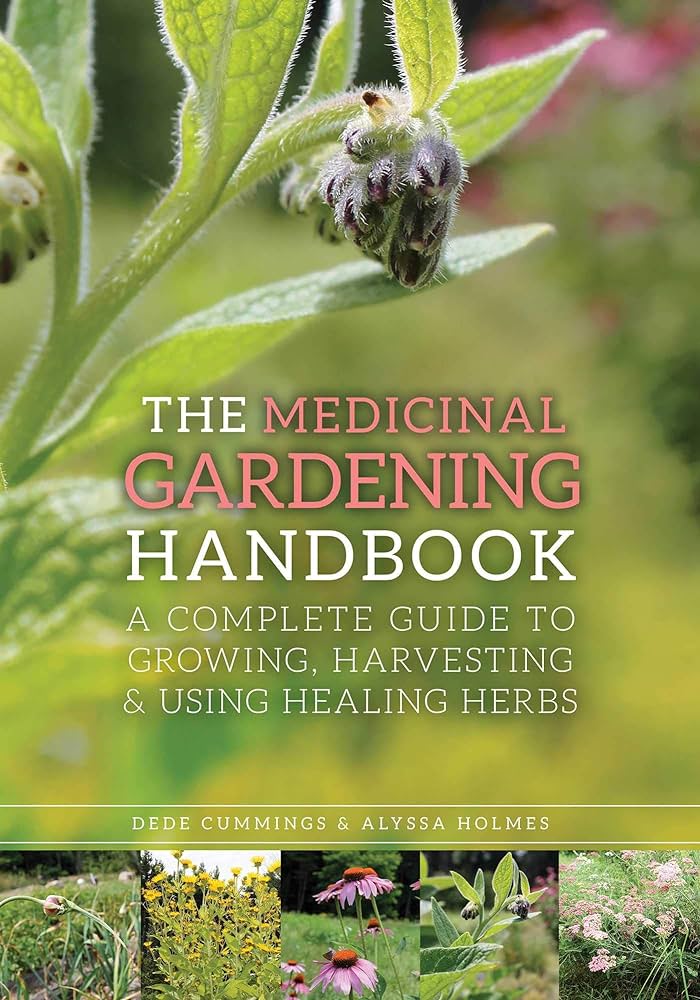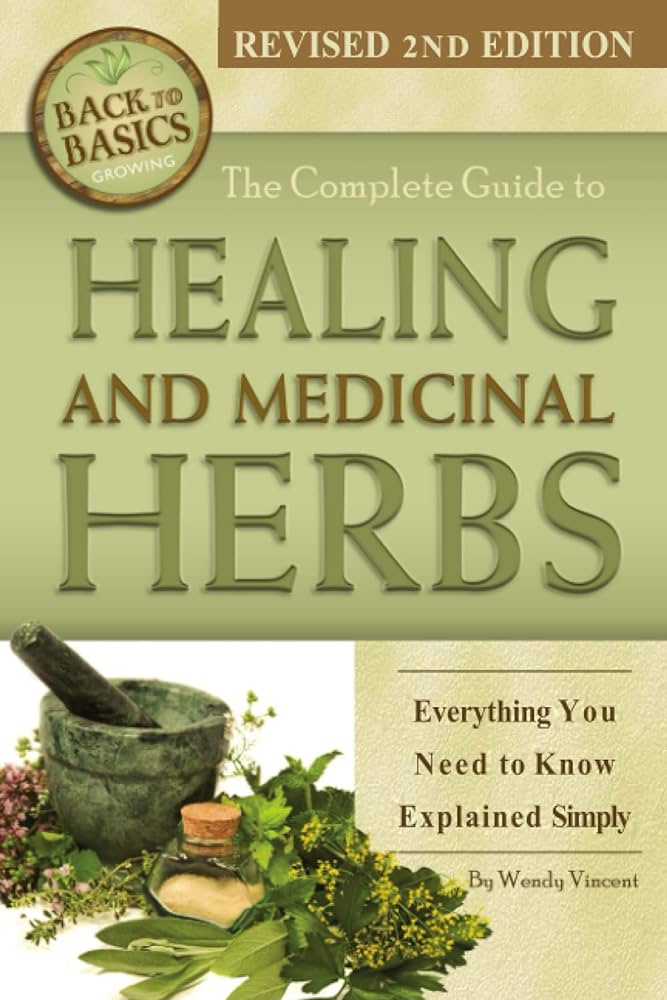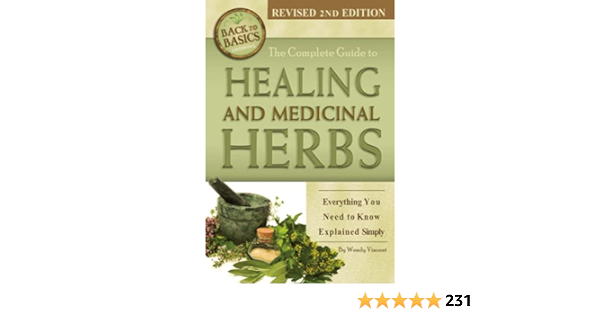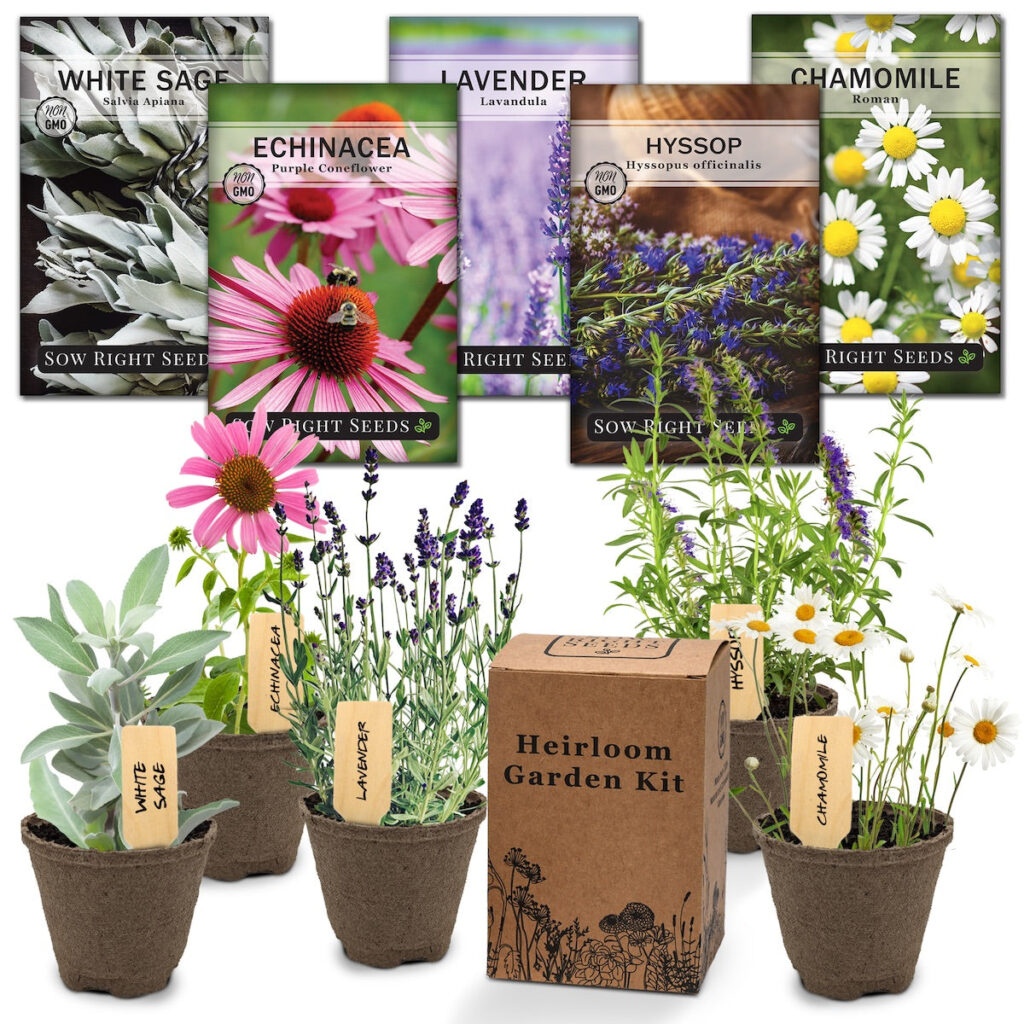
In this comprehensive guide, you will discover everything you need to know about growing medicinal herb seeds. Whether you’re a seasoned gardener or a beginner, this article will provide valuable insights and practical tips that will help you successfully cultivate a diverse range of medicinal herbs. From selecting the right seeds to nurturing them into thriving plants, we will guide you step by step through the process, ensuring that you have a bountiful harvest of herbal remedies right at your fingertips. Get ready to embark on a journey of green thumbs and healing properties as we uncover the secrets to growing your very own medicinal herb garden.

This image is property of Amazon.com.
Choosing Medicinal Herb Seeds
When it comes to growing your own medicinal herbs, choosing the right seeds is a crucial first step. Researching medicinal herbs and their benefits is the key to selecting the right ones for your needs. Take some time to understand the different medicinal properties of various herbs and identify the ones that align with your health goals. Whether you are looking for herbs to aid digestion, promote relaxation, or boost your immune system, there is a wide variety of options available.
Once you have identified the medicinal herbs you want to grow, it’s time to select the right seeds. Opt for high-quality seeds from reputable suppliers. Look for seeds that are specifically labeled as medicinal herbs and ensure that they are organic and non-GMO. This guarantees that you are getting seeds of the highest quality and that they have not been genetically modified or treated with harmful chemicals.
Preparing for Planting
Before you start planting your medicinal herb seeds, gather all the essential gardening tools you will need. These include a trowel, gardening gloves, pruning shears, watering can, and seed trays or containers. Having these tools on hand will make the planting process much smoother and more efficient.
Creating the ideal growing environment for your medicinal herbs is crucial to their success. Determine whether you will be growing your herbs indoors or outdoors, as this will affect the conditions you need to create. Indoor herb gardens require adequate lighting, whereas outdoor gardens need to be shielded from extreme temperatures and excessive sunlight.
Testing your soil’s pH levels and making the necessary amendments is essential to ensure optimal growing conditions for your medicinal herbs. Most herbs prefer slightly acidic to neutral soil, so it’s important to adjust the pH if necessary. Adding organic matter, such as compost, can help improve the soil’s fertility and drainage.
Planting Medicinal Herb Seeds
Timing is key when it comes to planting medicinal herb seeds. Determine the ideal planting time for each herb variety you are growing. Some herbs, like basil and dill, are annuals and can be planted directly in the garden after the last frost date. Others, such as lavender and rosemary, are perennials and may require starting indoors or in a greenhouse before transplanting outside.
Choosing the right planting location is crucial for the success of your medicinal herb garden. Most herbs prefer well-drained soil and full sun, so select a spot that meets these criteria. If planting in containers, ensure they have drainage holes and are placed in an area with sufficient sunlight and protection from harsh elements.
When planting seeds in containers, use a well-draining potting mix specifically designed for herbs or vegetables. Follow the seed packet instructions for depth and spacing, and gently water the soil after planting. Label your containers to keep track of the different herb varieties you have planted.
For those who prefer direct seeding in the garden, prepare the soil by removing any weeds or debris and loosening it with a garden fork or tiller. Plant the seeds according to the recommended depth and spacing, and gently water the soil to settle the seeds in place.
Watering and Irrigation
Understanding the water needs of your medicinal herbs is crucial for their overall health and growth. Different herbs have different water requirements, so it’s important to know the specific needs of the herbs you are growing. Most herbs prefer well-drained soil and slightly moist conditions, but overwatering can be just as detrimental as underwatering.
Establishing an appropriate watering schedule is essential to meet your herbs’ moisture needs while avoiding overwatering. Check the soil moisture regularly by inserting your finger into the soil up to the first knuckle. If the soil feels dry at that depth, it’s time to water. Water deeply and thoroughly, allowing the excess water to drain away.
Adequate irrigation methods can help ensure your herbs receive the right amount of water. drip irrigation is an efficient and effective method for delivering water directly to the plant’s root zone, minimizing water waste and reducing the risk of leaf diseases. Alternatively, you can use a watering can or gentle hose attachment to water your herbs by hand.
Different herb varieties may require different watering techniques. Herbs with shallow roots, such as basil and cilantro, benefit from more frequent watering with smaller amounts of water. On the other hand, herbs with deep roots, like rosemary and thyme, prefer less frequent but deep watering to encourage their roots to grow deeper.

This image is property of Amazon.com.
Providing Adequate Sunlight
Just like all plants, medicinal herbs require adequate sunlight to thrive. Before planting your herbs, take the time to learn about their specific sunlight requirements. Some herbs, such as chamomile and lemon balm, prefer full sun, while others, like mint and parsley, can tolerate partial shade.
When growing herbs in containers or beds, placing them strategically is important to ensure they receive optimal sunlight. Observe your garden or indoor space throughout the day to identify the areas with the most sunlight. Position your herbs in these locations to ensure they receive the required amount of sun.
In some cases, supplementing sunlight with artificial light may be necessary, especially if you are growing your herbs indoors. Invest in grow lights that emit the full spectrum of light to mimic natural sunlight. Position the lights at the appropriate distance from the plants to provide adequate intensity without burning the foliage.
It’s important to protect your herbs from excessive heat or cold, as extreme temperatures can stress or damage the plants. If the weather is particularly hot, provide some shade to prevent sunburn and wilting. Similarly, if the temperatures drop below freezing, consider moving your potted herbs indoors or providing extra insulation to protect them from frost.
Maintaining Soil Health
Keeping your soil healthy is crucial for the overall well-being of your medicinal herbs. Start with nutrient-rich soil by adding organic matter, such as compost or well-rotted manure, to improve fertility and enhance the soil’s structure. This will provide your herbs with the essential nutrients they need to grow and thrive.
Implementing composting and mulching practices can further contribute to soil health. Composting kitchen scraps, yard waste, and herb trimmings creates nutrient-rich compost that can be added to the soil. Mulching your herb garden with organic materials, such as straw or wood chips, helps conserve soil moisture, suppress weeds, and regulate soil temperature.
Regularly testing the soil’s pH levels is important to ensure a suitable growing environment for your medicinal herbs. Most herbs prefer a slightly acidic to neutral pH range of 6.0 to 7.0. If the pH is too low or too high, adjust it accordingly by adding lime to increase pH or elemental sulfur to decrease pH.
Controlling weeds and pests organically is essential to maintain the health and productivity of your herb garden. Regularly inspect your plants for any signs of weed growth or pest infestations and take appropriate actions. Hand-pulling weeds, using organic mulch, and practicing companion planting can all help naturally control weeds. For pests, consider using organic pesticides or insecticidal soaps, and encourage beneficial insects to establish in your garden.

This image is property of Amazon.com.
Pruning and Harvesting Medicinal Herbs
Pruning your medicinal herbs is an important part of their care routine. Pruning helps promote healthy growth, maintain the desired shape and size of the plant, and prevent disease and pest issues. Different herb varieties may require specific pruning techniques, so it’s important to familiarize yourself with the particular needs of each herb you are growing.
Determining the right time to harvest your medicinal herbs is crucial to ensure their potency and flavor. Each herb has its own ideal harvest time, which is often related to the stage of growth or when the essential oils are most concentrated. Harvesting too early or too late can result in inferior quality herbs.
When harvesting your medicinal herbs, it’s important to handle them with care to prevent damage. Use clean and sharp pruning shears or scissors to cut the plant just above a node or leaf joint. Avoid stripping the plant entirely, as this can weaken its growth. After harvesting, make sure to properly preserve your herbs to maintain their medicinal properties.
Dealing with Common Issues
As with any garden, there are common issues that may arise when growing medicinal herb seeds. Identifying and treating herb diseases promptly is crucial to prevent them from spreading and causing significant damage to your plants. Common herb diseases include powdery mildew, damping-off, and root rot. Be vigilant in monitoring your plants for any signs of disease and take appropriate steps to control and manage them.
Preventing and managing pest infestations is essential for the health and well-being of your medicinal herbs. Common herb pests include aphids, caterpillars, and spider mites. Regularly inspect your plants for any signs of pests, such as chewed leaves or discoloration, and take action to control them. Introduce beneficial insects, like ladybugs and lacewings, to help control pest populations naturally.
Addressing nutritional deficiencies is important to ensure your medicinal herbs have access to the essential nutrients they need. Nutrient deficiencies can manifest as yellowing or discolored leaves, stunted growth, or poor flowering. Conduct soil tests to identify any nutrient imbalances and make the necessary amendments to rectify the deficiency.
Environmental stress factors, such as extreme temperatures, drought, or excessive humidity, can also impact the health and growth of your medicinal herbs. Keep an eye out for signs of stress, such as wilting or leaf drop, and take measures to mitigate these factors. Provide extra shade, water, or ventilation as needed to create a more favorable growing environment.

This image is property of cdn.shopify.com.
Expanding Your Medicinal Herb Garden
Once you have successfully grown your first batch of medicinal herbs, you may want to consider expanding your garden. There are various ways to do this, including propagating seeds through cuttings or division. Many herbs, such as mint and lemon balm, can be propagated easily by taking stem cuttings and rooting them in water or soil. Others, like chives and oregano, can be propagated by dividing the plants at the root level.
Learning about seed saving allows you to preserve and propagate your favorite medicinal herb varieties. When saving seeds, ensure they are fully mature and dry before harvesting. Store the seeds in a cool, dry place in labeled envelopes or airtight containers to maintain their viability.
Experimenting with new medicinal herbs can be a fun and exciting way to expand your garden and explore different health benefits. Research and discover herbs that align with your interests or address specific health concerns. Start with a small quantity of seeds to test their viability and ensure they grow well in your garden before scaling up.
If you’re ready to take your medicinal herb garden to the next level, consider scaling up your growing operation. This could involve dedicating more space, investing in additional gardening tools or equipment, or even starting a small herb business. As your knowledge and experience grow, you can explore different growing methods, such as hydroponics or vertical gardening, to maximize your yield.
Conclusion
Growing medicinal herb seeds is a rewarding endeavor that allows you to take control of your health and well-being. By choosing the right seeds, preparing the ideal growing environment, and understanding the needs of your herbs, you can successfully cultivate a thriving garden of medicinal plants. From planting to harvesting, maintaining soil health, and dealing with common issues, this comprehensive guide has provided you with the knowledge and tips to excel in your herb-growing journey. So roll up your sleeves, grab your gardening tools, and start growing your very own medicinal herb garden today!


